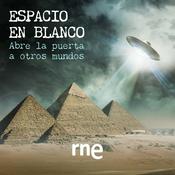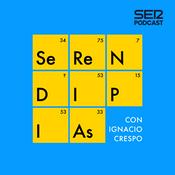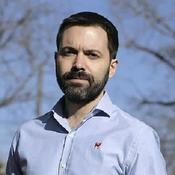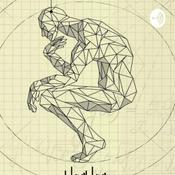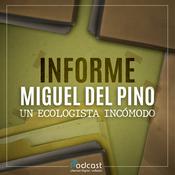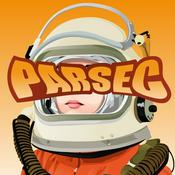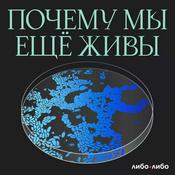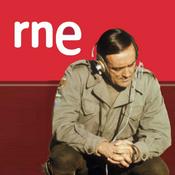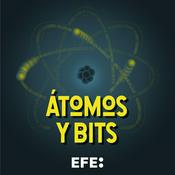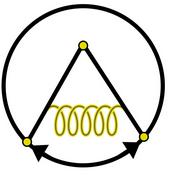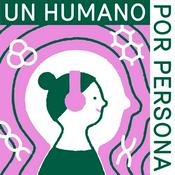24 episodios

David Bowie, Prince, Timothy Leary, and an AI-Powered Race With Time
24/12/2025 | 23 min
I recorded this episode on Christmas Eve, not out of allegiance to any particular religious institution, but because Christmas Eve still does something rare in the calendar.It creates a pause that doesn’t belong to any authority. It marks an ending without demanding resolution. It gives many of us permission to stop moving for a moment and ask where we actually are.This episode is about time — not as abstraction, not as philosophy, and not as technology — but as lived experience. Specifically, what has happened to our shared sense of time over the last decade, and why so many of us feel so displaced inside it.The story inside this episode begins in 2016.People remember 2016 as a particularly bad year, as if it announced itself. It didn’t. It arrived quietly and then began taking things away with unsettling regularity. Bowie. Prince. Cohen. Fisher. Cultural figures who felt less like celebrities and more like structural supports. By the end of that year, the calendar itself had become suspect. Loss no longer arrived with space around it. Events stacked. Grief turned ambient.In hindsight, that’s why 2016 feels strangely nostalgic now. It was the last time loss still arrived with punctuation. People mourned together. The calendar still felt like a shared object, something communal rather than mechanical.Everything after blurred.COVID flattened time completely. Days lost texture. Weeks collapsed. Months passed without landmarks. “COVID time” entered the language because nothing else could hold the disorientation. When lockdowns lifted, time didn’t recover — it accelerated. Entire years compressed. Memory misfiled whole seasons. The world resumed motion without recovering rhythm.AI followed close behind, not as spectacle or rupture, but as subtraction. Roles disappeared quietly. Skills aged overnight. Many people weren’t fired; they were simply no longer called. By the middle of the decade, millions were still standing where March 2020 had left them, while systems continued advancing without synchronization.By late 2025, another phrase began circulating, first as a joke and then without humor: NPC. Not metaphorically. Literally. Background characters inside someone else’s machine. The comparison resonated because it mapped too well.As time felt less inhabitable, people did what humans have always done. They looked backward. Ancient calendars resurfaced. So did old warnings about time itself. The Book of Enoch reappeared, not for its angels or apocalyptic imagery, but for its insistence that when rulers alter the calendar, disorder follows. Not because the heavens change — but because human reckoning does.By December 2025, attention turned upward again. An interstellar object passed through public consciousness. Astronomers were calm. The math closed. There was no threat. The sky behaved perfectly, which somehow made it worse. Precision without meaning unsettled people already out of sync with the calendar.At the same time, arguments about years returned. Snake. Horse. Collapse. Acceleration. These weren’t predictions. They were attempts to locate ourselves inside time again.The episode closes by asking a quieter question.If earlier countercultural movements, from Timothy Leary onward, tried to escape systems that felt dishonest or misaligned, what does agency look like now that there is no outside left to retreat into?The answer isn’t withdrawal. It’s re-entry.Calendars were never neutral. They were built to make time inhabitable — to space loss, to allow for return, to insist that beginnings and endings mattered. When they fail, people don’t abandon time. They rebuild it together.That is the work waiting for us in 2026.Not to outrun time.Not to optimize it.But to inhabit it again — deliberately, imperfectly, and humanly.Thank you for sharing this pause in time. This is a public episode. If you would like to discuss this with other subscribers or get access to bonus episodes, visit multiversethinking.substack.com

McDaniel Road - Tiny Homes, Big Ideas, and a Not-So-Simple Life
11/12/2025 | 17 min
In this episode of Citizen One: Exploring Our Urban Future, I return, unexpectedly, to a place I thought I had metabolized years ago: Western North Carolina. The hills that raised me; the place where the word home was always complicated; the terrain where beauty and hardship braid together in ways outsiders never fully see.This Citizen One episode begins with a simple message from an old friend:“Doug… what’s your take on a tiny-home community? They’re trying to drop one behind my house on McDaniel Road.”And suddenly the personal and the planetary collided. Because this isn’t just a story about a few prefab cottages on a ridge outside Lake Lure. It’s a story about the entire moral geometry of rural America—about extraction disguised as minimalism, about the language developers use to mollify the public, and about the quiet colonialism of modern “intentional communities” that arrive speaking the dialect of simplicity while practicing the economics of speculation.What’s happening on McDaniel Road is the distilled version of trends I’ve studied on five continents:* communities promised belonging, only to receive a branded approximation of it;* locals promised affordability, only to face a market calibrated to outsiders;* land promised stewardship, only to be asked to carry burdens it cannot bear.Tiny homes are not the problem.The operating system beneath them is.In this episode, we dig into the difference between attainable and affordable, between community and inventory, between ownership and subscription living masquerading as freedom. We examine why developers champion sustainability while clear-cutting fragile soils still unstable a year after Hurricane Helene—a storm that inflicted billions in damage across the Blue Ridge, reshaped watersheds, and left entire mountain slopes behaving like unhealed wounds.We examine how a company headquartered twenty minutes down the mountain can build a village whose economic logic actively excludes the very people who live there. How a promise of “simple living” becomes a land-lease model where residents own the house but not the ground beneath it—an elegant trap deployed globally, from Bali to British Columbia, turning the pastoral into a revenue stream and the resident into an annuity.But the point isn’t to demonize a developer.The point is to map a system.A system in which rural counties—already battered by climate events, limited infrastructure, and shrinking civic budgets—are expected to absorb hundreds of new units without sufficient wells, roads, emergency services, or new long-term revenue. A system where “eco-village” becomes a euphemism for Airbnb clusters. A system where crisis becomes an investment thesis.We widen the lens further:* In Santa Fe, twenty years of land speculation forced the city to confront the ethics of redevelopment on its own terms.* In Oregon, co-op models give tiny-home residents actual equity instead of a lifetime lease.* In Austin, a micro-home community builds not amenities but social fabric.* In the Scottish Highlands, “eco-lodges” quietly erode generational land rights.* In New Zealand, tiny homes had to be legally recognized as houses to prevent developers from evading responsibility.Every example is a mirror.Every mirror shows the same thing:When land stays local, communities grow.When land becomes a portfolio, communities hollow out.This episode is not a sentimental elegy for a rural America that never really existed.It’s a field guide for a rural America that could exist—if we stop treating beauty as a commodity and start treating belonging as infrastructure.We talk about density, hydrology, land-use ethics, fire access, stormwater liabilities, emergency-service constraints, septic load, flipped units listed at $423/sq ft, and the absurd contradiction of a developer marketing “freedom” while charging a monthly fee just to exist on the land.But we also talk about grief.About the quiet ache of watching your hometown become someone else’s branding exercise.About the dignity of neighbors who show up to a meeting not as NIMBYs, but as caretakers. About the moral illegibility of a world where a teacher cannot afford to live near her school, but an investor can afford three tiny homes he’ll never step inside.Tiny homes are neither a solution or a threat.They are a diagnostic.They reveal whether a community is building for its own longevity…or for someone else’s weekend itinerary.And so this episode asks the real question—the one beneath all the zoning maps and floodplain studies:Who does this land belong to?Who will it serve?And who will be standing here in twenty years when the soil shifts again?This is not an episode about nostalgia.It’s an episode about stewardship—about the responsibility we owe to the places that shaped us, and the obligation to name what is happening before the branding glosses over the truth.If rural America has a future, it will not be built on the promise of “less.”It will be built on the practice of enough—enough dignity, enough foresight, enough courage to ask:Are we building homes, or just inventory?I’m Douglas Stuart McDaniel, speaking from Barcelona and looking back toward the Blue Ridge.Welcome to Citizen One, Season 2, Episode 7.McDaniel Road. Tiny Homes. Big Ideas. And the unbearably complicated question of belonging. This is a public episode. If you would like to discuss this with other subscribers or get access to bonus episodes, visit multiversethinking.substack.com

Citizen One S2 E6: The Smart City Industrial Complex in an Age Defined by Moore’s Law
05/12/2025 | 15 min
In this episode of Citizen One: Exploring Our Urban Future, I take you deep inside the Smart City Expo World Congress in Barcelona—a place that, for one week each year, becomes the beating heart of global urban imagination. It’s a strange crossroads: urbanists, technologists, ministers, consultants, researchers, civic reformers, start-up evangelists, sovereign delegations, and the wandering tribe of people like me who have spent too many years inside megaprojects to believe the sales pitches but still care too much to walk away.This isn’t an episode about glossy renderings, futuristic mobility pods, or the usual chorus of keynote optimism. It’s about the thing humming underneath all of that—the Smart City Industrial Complex, and the uncomfortable contradictions powering it.On the surface, the technology is dazzling. Digital twins modeling entire metro regions in real time. AI mobility engines reshaping how people move. Micro-grids learning from their own failures. Civic data platforms slimming down enough for small towns to actually use. Tools accelerating at a pace dictated by Moore’s Law, not by the slow cultural physics of cities—the lived, human physics that don’t double every 18 months.But the real shift this year wasn’t technological.It was geopolitical.For the first time, the Global South wasn’t standing at the periphery of innovation—it was authoring it. Kenya, Senegal, Vietnam, India, Brazil, the Philippines, Indonesia, Colombia—each arriving not with borrowed blueprints but with sovereign visions rooted in their own cultural, economic, and ecological realities. Less optimization, more dignity. Less prediction, more participation. Less extraction, more agency.And yet the structural tension persists—the one you can feel in your teeth if you’ve ever worked behind the curtain:A global industry built on exporting efficiency too often ends up importing inequality.A planning apparatus fluent in the language of “inclusion” still stumbles when asked for accountability.A vision of urban progress remains draped—sometimes unknowingly—in the selective morality of empire.So this episode asks the question no one wants to say aloud on the Expo floor:Who gets to define the future of cities—and who gets erased in the process?We trace the failures of top-down megaprojects across democracies and monarchies alike—projects that collapse not because of technology, but because no one bothered to ask people what they wanted.We look at the quieter revolutions unfolding in places like Medellín, Vienna, and even here in Barcelona—cities rediscovering that sovereignty begins with citizens, not sensors.Because cities don’t need more dashboards.They need mirrors.They need memory.They need accountability baked into their governance, not patched in as an afterthought.The next urban revolution will not begin in a command center, a render farm, or a procurement office.It will begin the moment citizens decide they will no longer be optimized out of their own streets.Welcome to the reckoning, Citizen One. This is a public episode. If you would like to discuss this with other subscribers or get access to bonus episodes, visit multiversethinking.substack.com

Citizen One S2:E5 – The Civic Brand: Reclaiming the Honest Soul of the City
11/11/2025 | 1 h 15 min
What if cities stopped marketing themselves and started remembering who they are?That’s the question at the heart of this week’s episode of Citizen One:Exploring Our Urban Future, an urbanNext original podcast series. This week, I have a conversation with Ryan Short, author of The Civic Brand and founder of CivicBrand — a firm reshaping how communities think about identity, engagement, and belonging.We talk a lot about “smart cities,” but not enough about honest cities — places that understand their stories, their people, and their contradictions. Ryan’s work cuts through the noise of slogans and “Live-Work-Play” tropes to explore what happens when a city’s brand stops being a product and starts being a practice.In our discussion, we look at how civic identity becomes the connective tissue between design, governance, and culture, and why authenticity is the only sustainable strategy in a time when sameness has become the default design language of the world.The Soul Beneath the BrandRyan and I start with the idea that cities keep rebranding themselves without rediscovering themselves. From High Point, North Carolina’s transformation from “Furniture Capital” to “City of Makers,” to Austin’s self-invented cultural compass, “Keep Austin Weird,” to Santa Fe’s deep commitment to ethical authenticity — each case study reminds us that true identity is participatory, not performative.“If your city looks like everyone else’s,” Ryan says, “you’ve already lost the plot.”We also challenge the limits of the American conversation around place branding. The real test of civic identity isn’t just in neighborhood revitalization projects — it’s in how well a city adapts its story to a global stage without losing its soul.The Global ConversationAs someone who lives and works in Barcelona — the city where Ildefons Cerdà coined the term urbanization — I couldn’t let this episode go by without addressing how The Civic Brand approaches overtourism. Too often, global cities like Barcelona get reduced to case studies in excess, when in truth they remain the birthplaces of civic literacy.Barcelona’s story isn’t one of failure; it’s one of endurance and reinvention — a city that continues to lead the global conversation about livability, culture, and belonging.Ryan’s notion of global civic literacy — cities learning from one another, not mimicking one another — hits a nerve here. Whether it’s Costa Rica’s “Pura Vida” as an organic brand shaped by lived values, or Detroit’s resurrection through creative resilience, each example reveals the same truth: civic identity thrives when rooted in people, not policy.Why It MattersThis episode pushes us to see civic branding not as marketing, but as moral infrastructure — a way for cities to align their policies, design, and collective narrative around honesty and inclusion. It’s a conversation about power, participation, and the future of belonging in an age of AI, digital twins, and rapid urban change.“The future of cities,” Ryan reminds us, “will be co-authored by citizens.”Listen & Share🎧 Citizen One: Exploring Our Urban FutureS2:E5 – Claiming the Soul of a Citywith Ryan Short, author of The Civic BrandAvailable now on Spotify, Apple Podcasts, and CitizenOne.world.Doug’s ReflectionCities are living organisms, not design systems. They remember what we forget. And every effort to brand a city is, at its best, an effort to listen — to hear what the city has been trying to say all along. This is a public episode. If you would like to discuss this with other subscribers or get access to bonus episodes, visit multiversethinking.substack.com

Citizen One S2:E4 – Go Home: Rural Urbanism Between Storms, Saints, and Sinners
22/10/2025 | 25 min
In this episode of Citizen One: Exploring Our Urban Future, an urbanNext original podcast series, host Douglas Stuart McDaniel traces a single day on the Mississippi Gulf Coast into an inquiry about what resilience really means — not as a buzzword, but as a lived condition. The story begins in Old Metairie, Louisiana, in a po’boy shop thick with fried shrimp, football, and loyalty — and follows a meandering road through New Orleans’ neighborhoods, past the jazz-haunted blocks of Tremé, to the rural edges of Hancock County, Mississippi. What begins as a casual weekend detour becomes a meditation on the architecture of survival — one measured not in blueprints or budgets, but in memory, humor, and faith.At the center of the story are two structures that could not be more different: NASA’s Stennis Space Center — a fortress of concrete and control where engines are tested to withstand the violence of liftoff — and Harold and Lillian’s Bar, a battered, 79-year old roadhouse at the edge of the marsh, rebuilt again and again after hurricanes have tried to erase it. Together they frame McDaniel’s exploration of what he calls rural urbanism: the informal systems of adaptation that keep communities alive long after formal ones have failed.The contrast becomes a kind of parable. Stennis represents engineered resilience — redundancy, hard infrastructure, the scientific will to endure. Harold and Lillian’s embodies vernacular resilience — plywood, laughter, and the quiet insistence of people who rebuild without permission. One measures in PSI; the other measures in people. Both are necessary.Threaded through the narrative is the story of Go Home, the bar’s Newfoundland mascot — a dog who once walked patrons safely to their cars and refused to abandon the building during Hurricane Zeta. In the end, “Go Home” becomes more than a name; it’s a philosophy of place. In a region where storms reset the hierarchy with every season, home isn’t a house — it’s whatever still stands when the water recedes. Sometimes it’s a porch, a bar, a jukebox. Sometimes it’s the friend who won’t let you disappear.By the episode’s close, the journey bends back toward Ocean Springs and the basement speakeasy of the Julep Room — buried underneath Aunt Jenny’s Catfish Parlor. A place once haunted by Elvis, it’s a final stop where bourbon, music, and memory converge. McDaniel weaves the day’s encounters into a reflection on endurance and belonging, suggesting that the true test of civilization may not be found in cities at all, but in the small, unpolished systems that hold when everything else breaks.“Go Home” is, at its core, an essay about continuity — about how communities fold grief, humor, and myth into their own foundations. It’s a portrait of the Gulf Coast as both laboratory and metaphor, where rockets and roadhouses exist on the same continuum of faith.The episode closes with a preview of McDaniel’s debut novel, Ashes of Empire: Ghost Emperor — a sweeping historical epic that echoes the same themes: how empires fracture, how myths survive, and how the human will to rebuild never really changes. This is a public episode. If you would like to discuss this with other subscribers or get access to bonus episodes, visit multiversethinking.substack.com
Más podcasts de Ciencias
Podcasts a la moda de Ciencias
Acerca de Citizen One: Exploring Our Urban Future
Escucha Citizen One: Exploring Our Urban Future, Muy Interesante - Grandes Reportajes y muchos más podcasts de todo el mundo con la aplicación de radio.es

Descarga la app gratuita: radio.es
- Añadir radios y podcasts a favoritos
- Transmisión por Wi-Fi y Bluetooth
- Carplay & Android Auto compatible
- Muchas otras funciones de la app
Descarga la app gratuita: radio.es
- Añadir radios y podcasts a favoritos
- Transmisión por Wi-Fi y Bluetooth
- Carplay & Android Auto compatible
- Muchas otras funciones de la app


Citizen One: Exploring Our Urban Future
Descarga la app,
Escucha.




